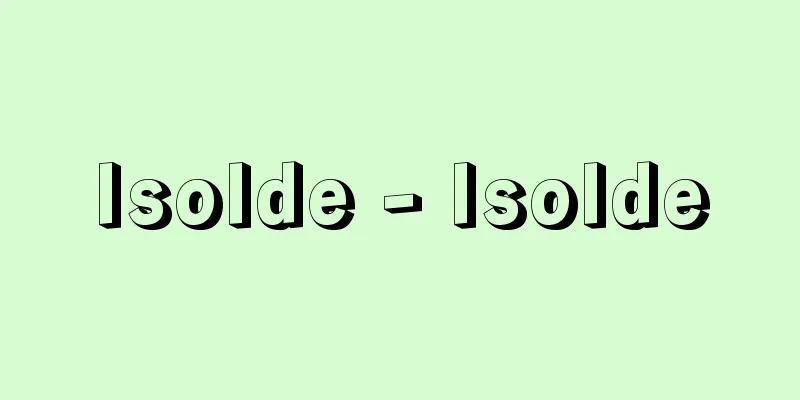Protective coloration

|
A type of camouflage color in animals, which helps prey escape predators by blending in with the surrounding colors and becoming less noticeable. Similarly, the camouflage color of predators that helps them approach unnoticed by prey is also called protective coloration. Examples include the pale sand-like colors of desert animals, the bluish color of animals that live near the sea surface, the white color of Arctic animals, and the green color of many animals that live on plants. The upper side of fish (usually the dorsal side) is darker than the underside, but each matches well with the light and dark of the natural background, and acts as a protective coloration. Hares, ptarmigans, and other birds change their body color to match the changing colors of the fields and mountains with the seasons. Some animals change their body color one after another throughout their life cycle to suit their habits. It is well known that toads, stick insects, and other creatures are often extremely difficult to find, not only because of their body color but also because of their morphology, which, combined with their behavior, makes them difficult to spot. Many animals change the shade or color of their body color to match the background. As is particularly evident in flounder, some animals subtly change their body color in parts to match a background with partially different colors, allowing them to hide in the background. These changes in body color are controlled by the eyes and central nervous system, and sometimes by endocrine glands, and are caused by the action of pigment cells that produce black, white, yellow, red, and other colors. The importance of protective coloration as a factor in evolution was pointed out by C. Darwin, as an example of natural selection. [Shoji Baba] [Reference] |Source: Shogakukan Encyclopedia Nipponica About Encyclopedia Nipponica Information | Legend |
|
動物の体色における隠蔽色(いんぺいしょく)の一種で、被食者が周囲の色彩に紛れて目だたなくなることによって、捕食者から逃れるのに有効なものをいう。同様にして、被食者に気づかれずに近づくのに有利な捕食者の隠蔽色をも、保護色ということがある。砂漠の動物が砂に似た淡い色彩をもつこと、海面近くにすむ動物が青みがかっていること、北極の動物の白さ、植物上にすむものの多くが緑色をしていることにその例をみることができる。魚の上面(多くは背側)は下面に比べ暗い色をしているが、それぞれ背景の自然の明暗によくマッチし保護色として働いている。ノウサギ、ライチョウなどは、季節変化とともに野山の色彩が変わるにつれて、それにあわせた体色変化をみせる。ある種の動物は、生活環のなかでその習性にあわせつつ次々に体色を変化させていく。ヒキガエル、ナナフシなどは、体色ばかりでなくその形態も周囲のものと紛らわしく、その行動とも相まって、これを発見するのがしばしばきわめて困難であることはよく知られている。多くの動物は背景にあわせて体色の濃淡や色彩を変化させる。ヒラメなどで顕著にみられるように、部分的に色彩の異なる背景には、これにあわせて体色も部分的に微妙に変化させ背景に溶け込むように隠れるものもある。これらの体色変化は目と中枢神経系、また、ときには内分泌腺(せん)によって支配されており、黒、白、黄、赤などの色素細胞の働きによっておこる。保護色が進化の一要因として重要であることは、自然選択の一例として、C・ダーウィンによって指摘されている。 [馬場昭次] [参照項目] |出典 小学館 日本大百科全書(ニッポニカ)日本大百科全書(ニッポニカ)について 情報 | 凡例 |
<<: Pogodin, Mikhail Petrovich
Recommend
Nyuto Onsenkyo
A general term for hot springs scattered around t...
The Thibaults - The Thibaults
A long novel by French author Martin du Gard. Pub...
Auriol, JB (English spelling) AuriolJB
...The basis of clowning was laid by Joseph Grima...
Afar language - Afargo
...It includes over 40 languages, including Oromo...
Margarya melanoides (English spelling) Margaryamelanoides
...It is edible. The small pig snail Margarya mel...
Tegata Chidori - Tegata Chidori
A beautiful terrestrial orchid (illustration) with...
Salvation Corps - Kyuseidan
...In 1927, Gunpei Yamamuro became the commander ...
Shadow Stepping Demon
…(4) Shadow Stepping Style: Stepping on the shado...
Campanus, N. - Campanus
…Pacioli also published a Latin translation of Eu...
Orthocenter - Suishin
The three perpendicular lines drawn from the thre...
Pointillism
A painting technique that uses short, dot-like str...
Omnibus film - Omnibus film
Strictly speaking, it is a film that is a collecti...
Bloch, F.
…Recent high-resolution mass analyzers have sensi...
Owen
Founder of the British socialism and co-operative ...
Japan Creative Print Association
An art group founded in 1918 by Yamamoto Tei, Oda ...









![Ouvea [island] - Ouvea](/upload/images/67cf8e0e7bc54.webp)